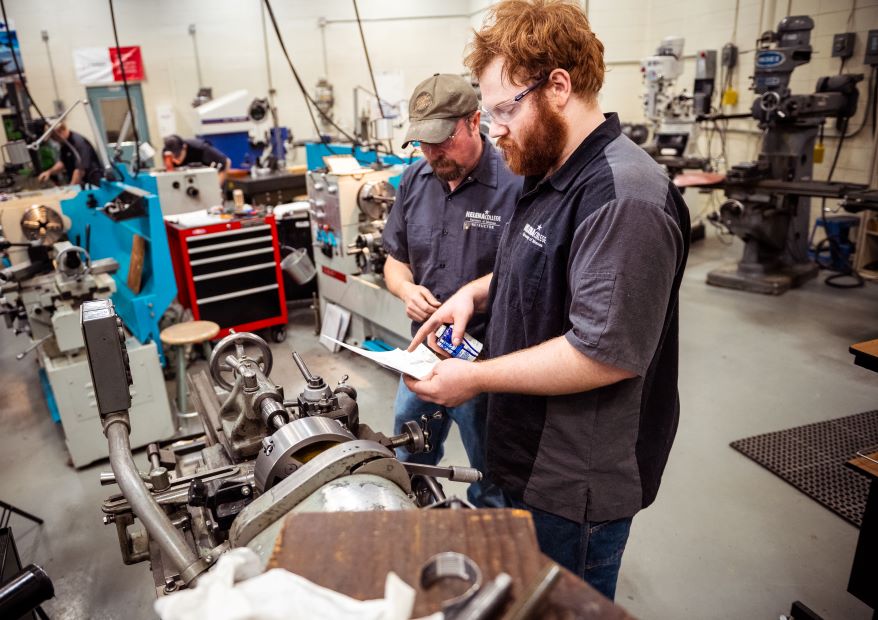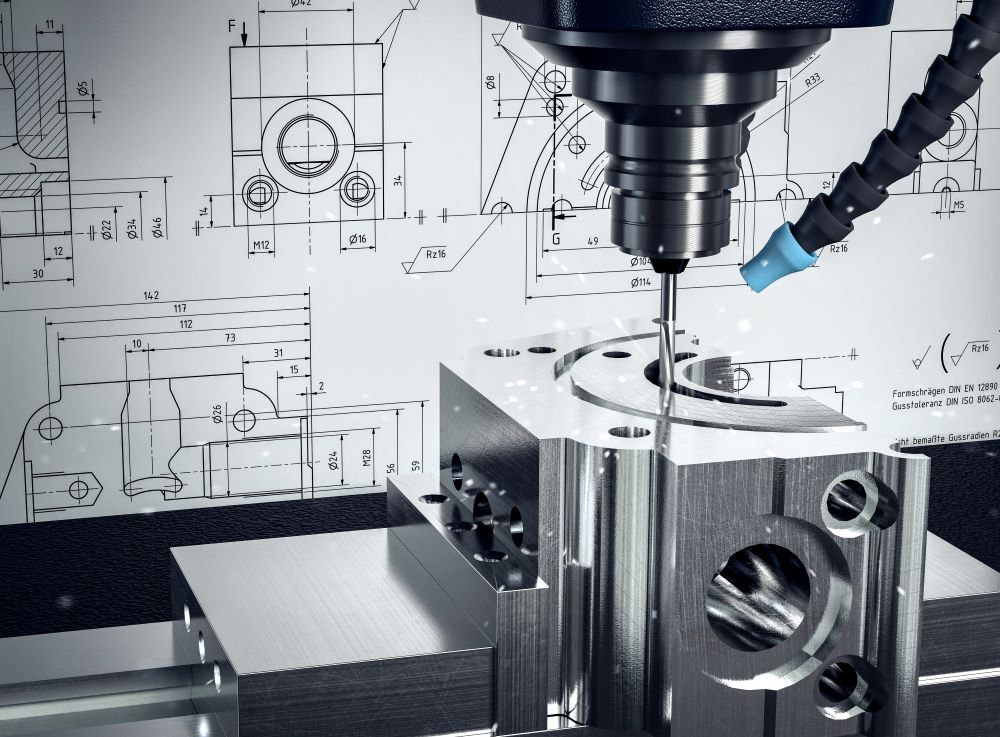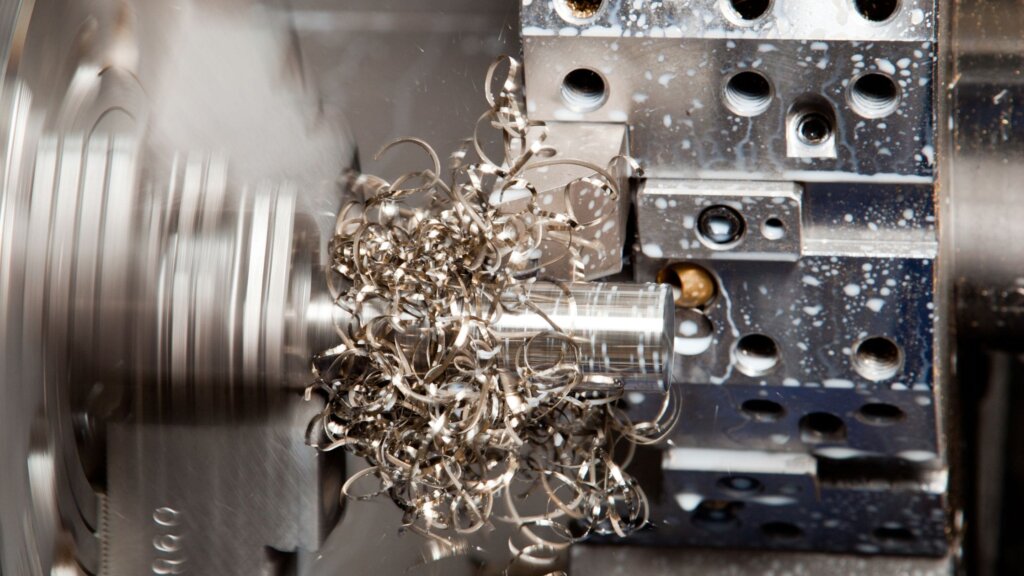Fasteners and Machining: Incorporating Accuracy and Toughness in Production
Fasteners and Machining: Incorporating Accuracy and Toughness in Production
Blog Article
Revealing the Details of Fasteners and Machining Processes for Ideal Efficiency
In the world of engineering and production, the choice of bolts and the complexities of machining processes play a crucial function in identifying the ultimate efficiency and toughness of a product. From the apparently simple job of selecting the best kind of fastener to the facility precision machining techniques utilized, every step in this process needs careful focus to detail. As we embark on this expedition into the globe of fasteners and machining, we will reveal the subtle yet critical aspects that can considerably influence the efficiency and top quality of the end product, clarifying the usually ignored facets that can make all the difference in accomplishing optimum performance.

Relevance of Correct Bolt Choice
Selecting the appropriate bolts is vital in making certain the architectural stability and longevity of any kind of mechanical assembly. Fasteners play a fundamental duty in holding elements together firmly, with the appropriate option contributing dramatically to the general performance and integrity of the setting up. When selecting fasteners, variables such as material compatibility, ecological problems, load-bearing capacity, and convenience of setup must be meticulously taken into consideration to ensure optimal efficiency.
Incorrect fastener option can result in a range of concerns, including loosening, deterioration, and even architectural failure. Using bolts that are not fit to the specific needs of the assembly can endanger its functionality and posture safety and security risks. Therefore, designers and designers must diligently assess the application requires and select bolts that meet or go beyond the required requirements and requirements.
Moreover, the right bolt choice procedure entails examining the joint layout, prepared for loads, resonance degrees, and possible thermal development or contraction to ensure that the picked fasteners can endure the operating problems properly. By focusing on correct bolt option, manufacturers can enhance the high quality, longevity, and efficiency of their mechanical settings up.
Kinds and Features of Bolts
A vital element of mechanical settings up lies in comprehending the diverse types and distinct attributes of fasteners used in different industrial applications. Fasteners are crucial components that hold structures together, making certain security and performance. There is a vast array of fasteners available, each designed for details objectives based upon the application demands. Typical sorts of fasteners include screws, bolts, nuts, pins, rivets, and washers.
Screws are threaded bolts that are commonly utilized to sign up with two or even more components with each other. Nuts are inside threaded fasteners that mate with screws to hold components together. Washing machines are thin plates that disperse the load of a fastener, preventing damage to the product being fastened.
Understanding the qualities of each type of fastener is necessary for choosing the ideal one for a specific application, making sure ideal performance and dependability of the mechanical assembly. Fasteners and Machining.
Accuracy Machining Strategies for Performance
The detailed style demands of different fasteners demand using accuracy machining methods for optimal efficiency in making procedures. Precision machining is essential in making sure that bolts fulfill the specific specs needed for their intended application. Among the main techniques made use of in precision machining is Computer Numerical Control (CNC) machining, which makes it possible for high levels of precision and repeatability in the manufacturing of fasteners. CNC equipments can carrying out complex cuts and forming operations with marginal human intervention, resulting in raised effectiveness and consistency in the production process.
By using accuracy machining methods, makers can improve the high quality of bolts, reduce material waste, and improve general production efficiency. The use of innovative machining procedures aids ensure that bolts fulfill market requirements and consumer expectations for performance and integrity.

Variables Influencing Machining Process Performance
Numerous variables play a considerable role in establishing the efficiency of machining procedures in the manufacturing of bolts. The first crucial factor is the choice of reducing tools. Choosing the ideal tools based upon the product being machined, preferred surface, and cutting rates can greatly influence the efficiency and high quality of the machining procedure. Additionally, the cutting specifications such as reducing rate, feed rate, and depth of cut are necessary variables that affect performance. Fasteners and Machining. Optimizing these specifications based upon the details requirements of the fastener being created is crucial to attaining accurate and economical machining.
Machine rigidity and security additionally play a crucial duty in establishing machining procedure efficiency. A steady maker with very little vibrations can enhance accuracy and protect against device wear, resulting in better overall performance. The ability and experience of the maker driver can not be taken too lightly. A knowledgeable operator can make real-time adjustments, troubleshoot concerns successfully, and make sure that the machining procedure runs Website efficiently, eventually affecting the last top quality of the fastener.

High Quality Control Actions in Manufacturing
Factors affecting machining process performance, such as cutting device option and equipment security, straight impact the application of quality assurance procedures in manufacturing. Quality control steps are vital in guaranteeing that products meet the required requirements and standards. In the manufacturing process, various strategies are used to preserve high quality standards. Inspection and screening play a critical duty in determining any deviations from the wanted result. Regular maintenance of machining tools is likewise important to support quality assurance. Calibration of tools and devices is essential to make sure exact and accurate manufacturing procedures. Additionally, applying standardized operating procedures and methods can assist in maintaining uniformity and quality throughout the address assembly line. Quality control gauges not only concentrate on the end item yet likewise on every phase of the production procedure to stop defects and mistakes. By adhering to rigorous top quality control procedures, producers can boost consumer satisfaction, construct a credibility for dependability, and inevitably accomplish optimal efficiency in their machining procedures.
Final Thought
To conclude, picking the right fasteners and utilizing precision machining techniques are necessary for optimum efficiency in making procedures. Recognizing the types and features of bolts, in addition to variables affecting machining procedure efficiency, can bring about boosted performance and quality assurance actions. By taking note of these details, suppliers can attain greater levels of performance and integrity in their items.
In the realm of engineering and manufacturing, the option of bolts and the ins and outs of machining processes play a pivotal role in determining the best efficiency and durability of an item (Fasteners and Machining). One of the key strategies utilized in precision machining is Computer system Numerical Control (CNC) machining, which makes it possible for high levels of accuracy and repeatability in the manufacturing of fasteners. The use of innovative machining procedures helps ensure that bolts satisfy industry criteria and consumer expectations for performance and integrity
In final thought, picking the best bolts and using precision machining strategies are vital for optimal efficiency in manufacturing procedures. Comprehending the kinds and qualities of fasteners, along with variables influencing go machining procedure performance, can lead to boosted effectiveness and quality control procedures.
Report this page